#prince alexander of hesse and by rhine
Explore tagged Tumblr posts
Text
Grand Duke Ernst Ludwig of Hesse's two beautiful grand-children (by his son George Donatus)
Isn't that little one too young to be pretending to smoke?

Young Princes Ludwig and Alexander of Hesse and by Rhine in 1935.
#hessian royal family#Prince Ludwig of Hesse and by Rhine#Prince Alexander of Hesse and by Rhine#Grand Duke Ernst Ludwig of Hesse and by Rhine
13 notes
·
View notes
Text
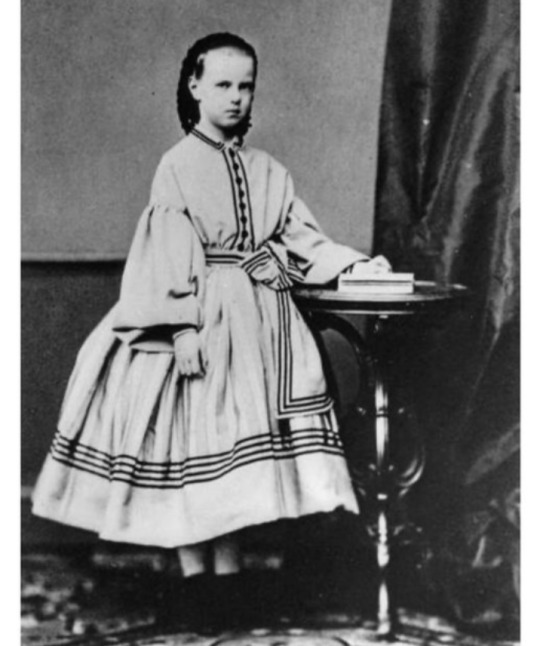

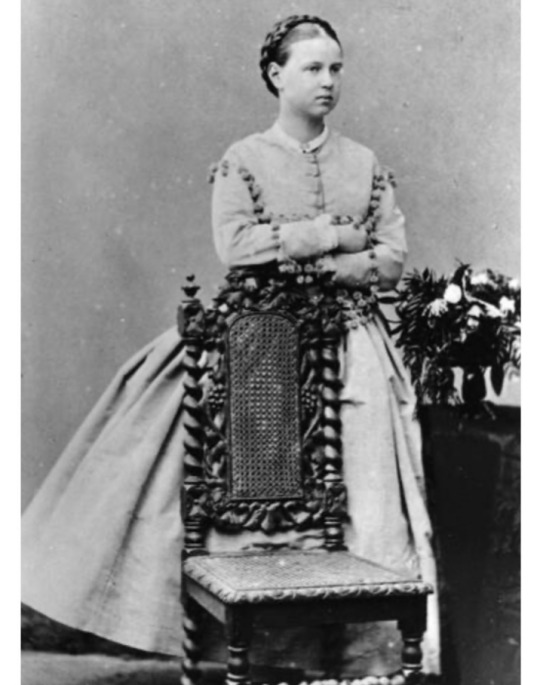
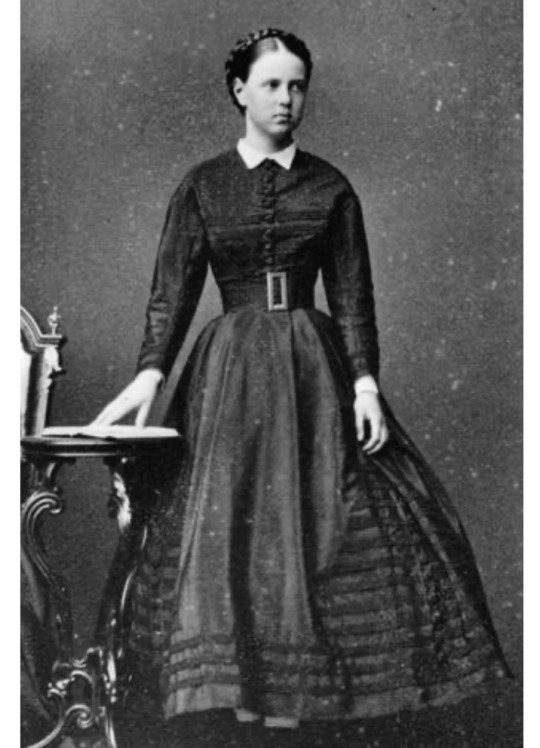




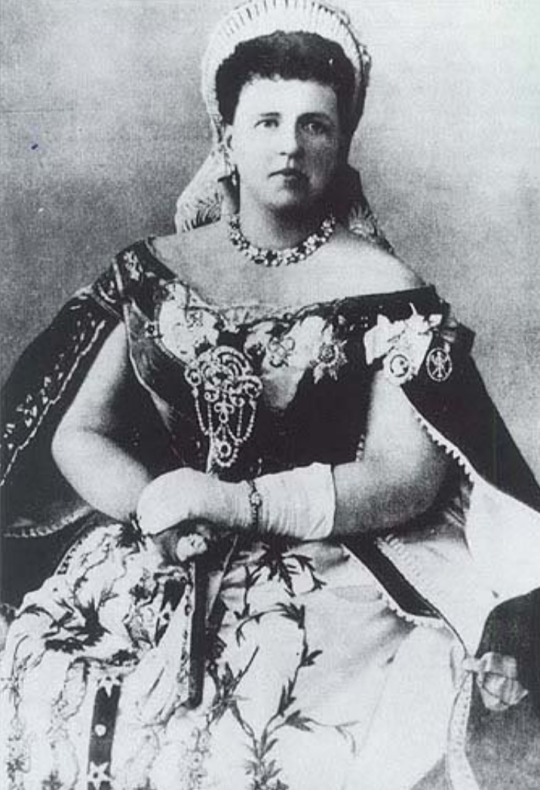
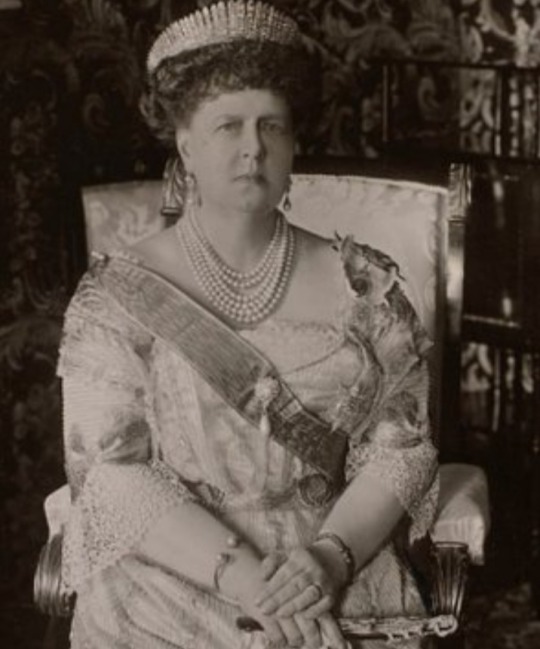
BORN ON THIS DAY:
Grand Duchess Maria Alexandrovna of Russia (17 October [O.S. 5 October] 1853 – 24 October 1920) was the fifth child and only surviving daughter of Alexander II of Russia and Marie of Hesse and by Rhine.
She was Duchess of Edinburgh and later Duchess of Saxe-Coburg and Gotha as the wife of Alfred, Duke of Saxe-Coburg and Gotha.
She was the younger sister of Alexander III of Russia and the paternal aunt of Russia's last emperor, Nicholas II.
#Grand Duchess Maria Alexandrovna of Russia#Alexander II of Russia#Marie of Hesse and by Rhine#Prince Alfred#Duke of Saxe-Coburg and Gotha#Alexander III of Russia#Nicholas II#House of Romanov#Hesse-Darmstadt#House of Hesse#House of Saxe-Coburg and Gotha
6 notes
·
View notes
Text
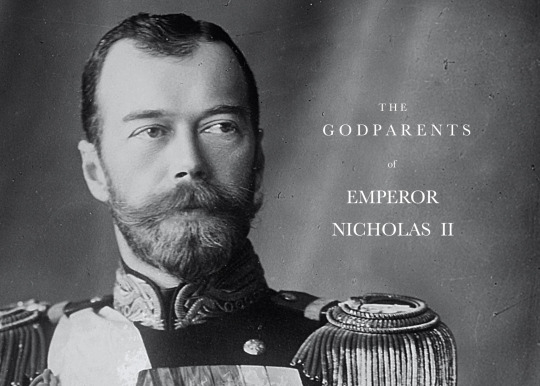
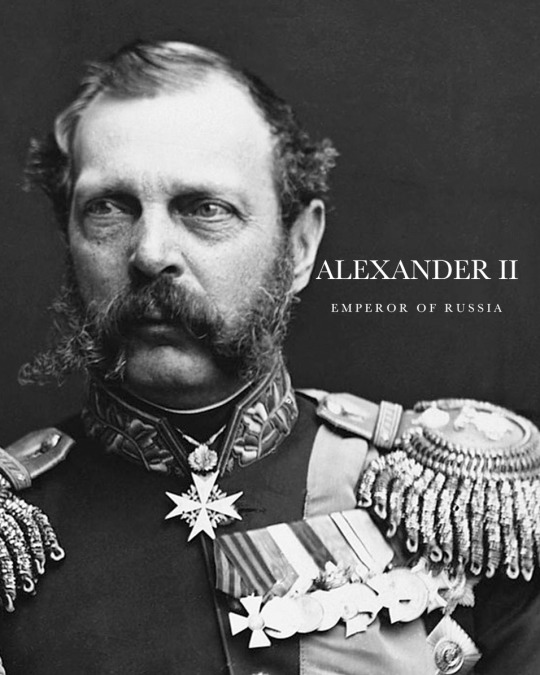
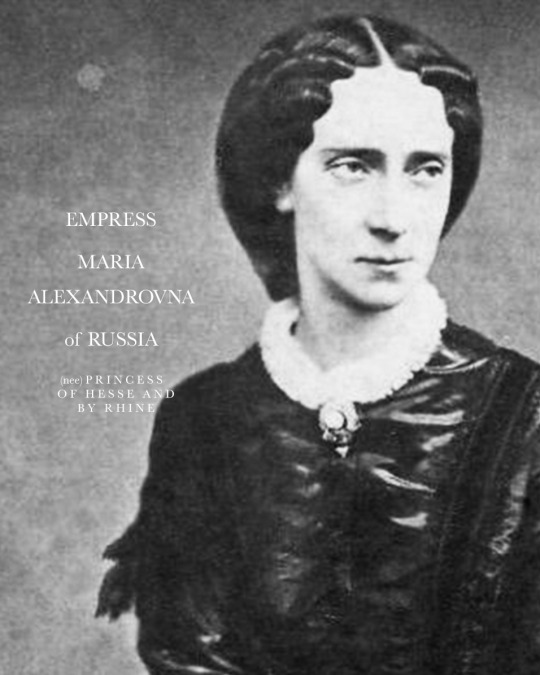


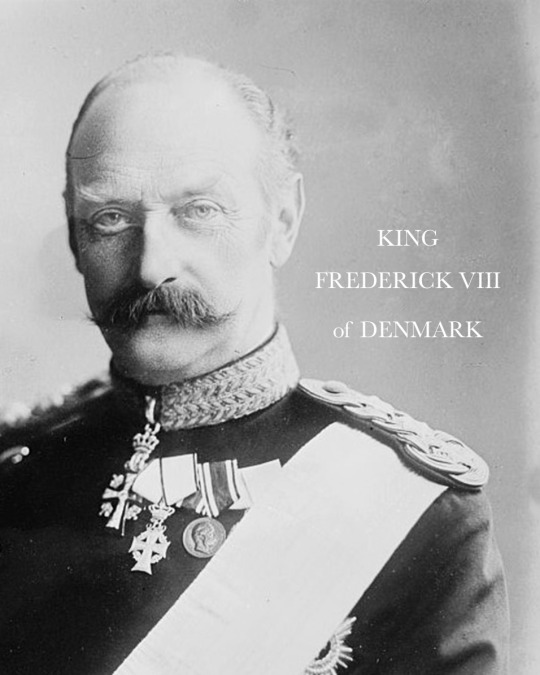
GODPARENTS OF NICHOLAS II
Born during his grandfather's reign on 18 May (New Style) 1868 at the Alexander Palace, Tsarkoe Selo in Saint Petersburg. He was the eldest son of Alexander III and his wife Maria Feodorovna (then, the Tsarevich and Tsarina of Russia). He was christened on 1 June at the Chapel of the Resurrection of the Catherine Palace at Tsarskoe Selo, by the confessor of the imperial family, protopresbyter Vasily Borisovich Bazhanov. His godparents were:
ALEXANDER II, EMPEROR OF RUSSIA - his paternal grandfather, the Russian Emperor stood as one of the godparents. He became the Emperor of All Russia in 1855. Alexander’s most significant reform as emperor was the emancipation of Russia’s serfs in 1861, for which he is known as Alexander the Liberator. He was assassinated in 1881 when the young Nicholas was only 12 years-old, to which he became the heir apparent upon his death.
PRINCESS MARIE OF HESSE AND BY RHINE, EMPRESS MARIA ALEXANDROVNA OF RUSSIA - his paternal grandmother, the consort of Emperor Alexander II, was another of his godparents. Known for her intellect, she was one of the founders of the Russian Red Cross Society. However, she suffered from tuberculosis from 1863 and spent long stays in southern Europe to avoid harsh winters. Although she and her husband were unofficially separated sometime after the death of their eldest son, Maria was treated with respect and love by her surviving family. Maria passed away from illness when the young Nicholas was still a child.
PRINCESS LOUISE OF HESSE-KASSEL, QUEEN CONSORT OF DENMARK - his maternal grandmother was listed as one of his godparents. Louise became the Queen consort of Denmark upon her husband's - King Christian IX - accession in 1863, just few years before her grandson Nicholas' birth. She, herself, was a niece of another King of Denmark (Christian VIII). The great dynastic success of Louise's six children was to a great extent a result of Louise's own ambitions - through them, she was a grandmother of not only the future Tsar of Russia (Nicholas II), but also that of King George V of the United Kingdom; King Constantine I of Greece; King Christian X of Denmark, and King Harken VII of Norway.
GRAND DUCHESS ELENA PAVLOVNA OF RUSSIA - his great-great-aunt, the wife of the late Grand Duke Michael Pavlovich, was one of his godparents. Born as Princess Charlotte of Württemberg, she became a close friend of his grandmother the Empress Maria Alexandrovna, and was known as an intellectual. She was also considered the most exceptional woman in the imperial family since Catherine the Great.
KING FREDERICK VIII OF DENMARK - then, the Crown Prince, his maternal uncle stood as one of his godparents. During the long reign of his father, he was largely excluded from influence and political power. Upon his father's death in 1906, he acceded to the throne at the advanced age of 62. In many ways, Frederick VIII was a liberal monarch who was much more favorable to the new parliamentary system introduced in 1901 than his father had been, being reform-minded and democratically inclined.
Source
87 notes
·
View notes
Text






Royal Deaths in History: 19th September
1339 - Go-Daigo, 96th Emperor of Japan.
1356 - Peter I, Duke of Bourbon, killed at the Battle of Poitiers.
1785 - Maria Antonia Ferdinanda of Spain, Queen of Sardinia, consort to Vittorio Amadeo III.
1802 - Luisa of Naples and Sicily, first wife of Ferdinando Ill, Grand Duke of Tuscany.
1895 - Countess Julia Hauke, Princess of Battenberg, morganatic wife of Prince Alexander of Hesse and by Rhine.
1902 - Marie Henriette, Queen of the Belgians, consort to King Leopold II.
11 notes
·
View notes
Text
CHILDREN OF PRINCESS VICTORIA MELITA OF EDINBURGH 🥺💙✨️🫶
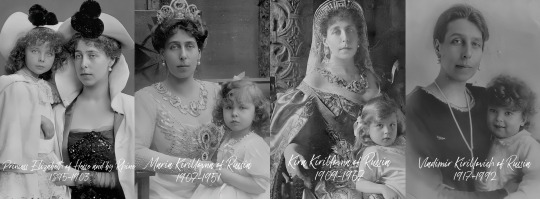
Princess Victoria Melita (25 November 1876 – 2 March 1936) was the second daughter and third child of Prince Alfred of Saxe-Coburg and Gotha and Grand Duchess Maria Alexandrovna of Russia! She was the granddaughter of Queen Victoria from her English father's side and Tsar Alexander II's granddaughter from her Russian mother's side. She is famous for her divorce and remarriage scandals!
In 1894, at the age of 18, at the suggestion of her grandmother, Queen Victoria, she married her cousin, Prince Ernest of Hesse and by Rhine! Between 1895 and 1900, Victoria Melita and Ernest had 2 children:
Princess Elizabeth of Hesse and by Rhine (11 March 1895 – 16 November 1903) affectionately known as "Ella"!
a stillborn son (25 May 1900 - 25 May 1900) who died in the womb of his mother In 1900, Victoria Melita gave birth to a stillborn son, which was very disappointing for Queen Victoria!
In 1901, Princess Victoria Melita and Ernest divorced because they had an unhappy and incompatible marriage. They were first cousins who married under family pressure, but they soon realized that they had nothing in common Princess Victoria was in love with another cousin, Grand Duke Kirill Vladimirovich of Russia, while Ernest was rumored to be a homosexual.
Princess Victoria Melita had a complicated and tragic relationship with her daughter Princess Elisabeth... She was fond of her daughter, but she was not very involved in her upbringing.
Princess Victoria Melita's relationship with her daughter Princess Elisabeth was strained after the divorce. Princess Elisabeth blamed her mother for the divorce and resented her for leaving her father. Princess Victoria tried to reconnect with her daughter during her visits, but she was only partially successful. Princess Elisabeth was very close to her father and preferred to stay with him at Wolfsgarten, where he built her a small house of her own in the woods. Princess Victoria and Princess Elisabeth never had a chance to fully reconcile, as Princess Elisabeth died of typhoid fever in 1903, at the age of eight. It was a tragic loss for both parents, who loved their little daughter dearly.
Victoria melita later wrote in her memoirs: "My little Ella was taken from me. She was the joy of my life and I never really recovered from this loss."
Victoria melita's memories of her daughter were mostly sad and bitter, but she also cherished some happy moments they shared. She remembered how Ella loved animals and nature, and how she enjoyed playing in the woods near Wolfsgarten, where Ernest built her a small house of her own. She also remembered how Ella had a sweet and gentle personality, and how she looked like a fairy with her Dark hair and blue eyes... Two years after the death of her daughter Elizabeth, in 1905 she married her cousin and long-term lover Kirill Vladimirovich! In 1907, Victoria Melita and Kirill welcomed their first child, a daughter named Marie. Marie was named after her maternal grandmother! In 1909, Kirill and Victoria Melita welcomed their second child, a daughter named Kira! And in 1917, Kirill and Victoria Melita welcomed their third and last child, a son named Vladimir, The birth was so difficult and painful that 41-year-old Victoria Melita went near death during the birth of Vladimir! Princess Victoria Melita had 3 children from her second marriage who survived to adulthood and married and all had children. Despite the birth of three more children, Princess Victoria Melita never forgot her little Elizabeth and always kept a portrait of her in her room until her death in 1936...
#Victoria melita of Edinburgh#princess elisabeth of hesse#Marie Kirillovna#Kira kirillovna#Vladimir Kirillovich
32 notes
·
View notes
Text
Grand Duchesses at the Coronation of Nicholas II and Alexandra Feodorovna
Nicholas II and his consort Empress Alexandra, were crowned on Tuesday, 14 May (O.S., 26 May N.S.) 1896, in Dormition Cathedral in the Moscow Kremlin. The magnificence of the occasion was never again seen in Russia. The Grand Duchesses were in full regalia. Here are two great photographs of them.

Above:
Sitting: Grand Duchess Alexandra Iosifovna (who had been present at the coronation of Alexander III); sitting on the floor at her knees is Princess Olga of Wurttenberg; sitting next to Alexandra Iosifovna is Princess Louise Margaret, Duchess of Connaught
Back Row Standing from Let to Right: Grand Duchess Vera Konstantinovna, Grand Duchess Anastasia of Mecklenburg-Schwerin, Grand Duchess Maria Pavlovna (the elder), Grand Duchess Elena Vladimirovna, Grand Duchess Elizabeth Mavrikievna, and Princess Elena of Saxe-Altenburg

Above:
In the center of this group, is Grand Duchess Marie Alexandrovna, (daughter of Tzar Alexander II, wife of Queen Victoria's second son Alfred, Duke of Saxe Coburg and Gotha, who is standing behind her.)
On the right side of Grand Duchess Marie Alexandrovna, is her daughter Victoria Melita, Princess of Saxe-Coburg and Gotha. Sitting to the left of her mother is the Crowned Princess of Romania, Marie (same name as her mother; known by the family as Missy). Her husband the Crowned Prince of Romania, Ferdinand, is standing slightly to the side, behind Missy.
Next to Ferdinand of Romania is Ernest Louis, Grand Duke of Hesse and By Rhine, husband of Victoria Melita at the time and brother of the Empress being crowned, Alexandra Feodorovna. To the right of Victoria Melita is her brother, Prince Alfred of Saxe-Coburg and Gotha who died at age twenty-four.
#Grand Duchess Vera Konstantinovna#Grand Duchess Alexandra Iosifovna#Grand Duchess Anastasia Mikhaelovna#Grand Duchess Anastasia of Meklenburg-Schewrin#Grand Duchess Marie Alexandrovna#Grand Duchess Elizabeta Mavrikievna#Grand Duchess Elena Vladimirovna#Princess Victoria Melita#Marie#Crown Princess of Romania#Missy#Princess Elena of Saxe-Altenburg#Princess Louise Margaret Duchess of Connaught#Princess Olga of Wurttenberg#imperial russia#romanov dynasty#Nicholas and Alexandra#Nicholas II#Coronation
31 notes
·
View notes
Photo
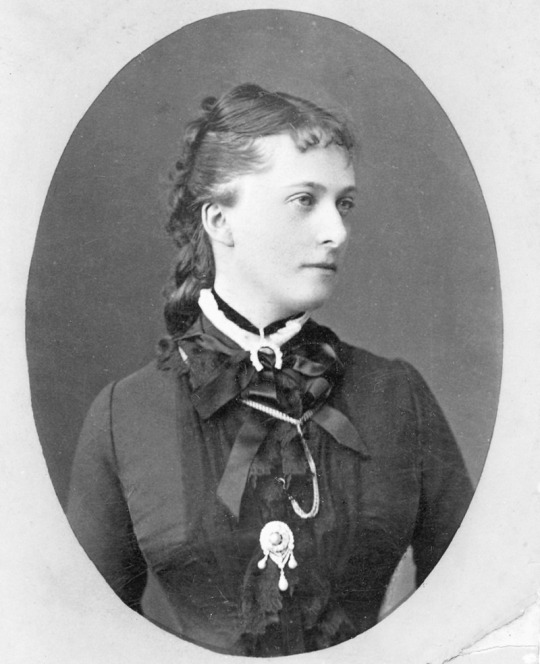
Princess Catherine Dolgorukova 14 November 1847, Volhynian Governorate, Russia – 15 February 1922, Nice, France) was a Russian aristocrat and the daughter of Prince Michael Dolgorukov (from Rurik dynasty) and Vera Vishnevskaya.
Catherine was a long-time mistress of Tsar Alexander II of Russia and later, as his morganatic wife, was given the title of Princess Yurievskaya.
Alexander and Catherine already had three children when they formed a morganatic marriage on 18 July 1880, after the death of the Emperor's wife, Marie of Hesse and by Rhine, on 3 June 1880. A fourth child had died in infancy. Catherine became a widow with the assassination of Alexander II on 13 March 1881 by members of Narodnaya Volya.
#Catherine Dolgorukova#women in history#House Rurik#people#portrait#photo#photography#Black and White
10 notes
·
View notes
Text
Grand Duchess Elizabeth was born Her Grand Ducal Highness Princess Elisabeth Alexandra Louise Alice of Hesse and by Rhine on November 1, 1864, the second child of Grand Duke Ludwig IV and his wife, born Princess Alice of Great Britain, a daughter of Queen Victoria. Princess Elizabeth married Grand Duke Sergei Alexandrovich, brother of Emperor Alexander III.
The young Grand Duchess was adored by the Imperial family and the Russian court for her beauty, kindness, and her ready adoption of Russian language, customs, and her ardent conversion to Orthodoxy.
Elizabeth and Serge moved to Moscow in 1894, when Serge was made Governor General of Moscow. Though Elizabeth had loved life in Saint Petersburg, it was not until her move to Moscow that began to see and understand what she was able to do for the less fortunate. She became very conscious of her role in helping the impoverished of Moscow, and sponsored benefits and charities in Moscow to help the poor and unfortunate.
In 1905, while driving through the Kremlin, an anarchist threw a bomb beneath her husband's carriage which exploded, tearing him to pieces, and killing him instantly.
Elizabeth remained in mourning, and in 1909, she took the veil and founded the Convent of Martha and Mary in Moscow. Elizabeth sold or gave away all her jewelry and possessions and assembled the funds to build the convent. The convent grew, and even during her lifetime, the Grand Duchess was called a saint by the poor of the capital. The convent, based on old Novgorod models, was an architectural jewel.
The convent grew and prospered until the Revolution. By 1918, her presence was finally no longer tolerated by the Revolutionary government, and she was arrested. They then exiled her first to Perm, then to Yekaterinburg, where she spent a few days and was joined by others: the Grand Duke Sergei Mikhailovich Romanov; Princes Ioann Konstantinovich, Konstantin Konstantinovich, Igor Konstantinovich and Vladimir Pavlovich Paley; Grand Duke Sergei’s secretary, Feodor Remez; and Varvara Yakovleva, a sister from the Grand Duchess’s convent. They were all taken to Alapaevsk on May 20, 1918, where they were housed in the Napolnaya School on the outskirts of the town.
On the night of July 17th, the prisoners were woken and driven in carts on a road leading to the village of Siniachikha. Some 18 kilometres from Alapaevsk there was an abandoned iron mine with a pit, twenty metres deep. The Cheka beat all the prisoners before throwing their victims into this pit, Elizabeth being the first. Hand grenades were then hurled down the shaft.
On October 8, 1918, the White Army discovered the remains of Elizabeth and her companions, still within the shaft where they had been murdered. Elizabeth had died of wounds sustained in her fall into the mine, but had still found strength to bandage the head of the dying Prince Ioann. Her remains were removed and ultimately taken to Jerusalem, where they lie today in the Church of Mary Magdalene.
Elizabeth was glorified by the Russian Orthodox Church Outside of Russia in 1981, and by the Patriarchal Russian Orthodox Church in 1992 as the New-Martyr Elizabeth. Her principal shrines are the Marfo-Mariinsky Convent, and the St. Mary Magdalene Convent on the Mount of Olives, which she and her husband helped build, and where her relics (along with the Nun Barbara) are enshrined. The convent was returned to the church and reopened in 1992 and the cathedral church in 2006, continuing St. Elizabeth’s work.
On this day, 105 years ago, on July 18th, 1918.
Grand Duchess Elisabeth Feodorovna was murdered by being thrown down a disused mine shaft in Siniachikha, Russia.
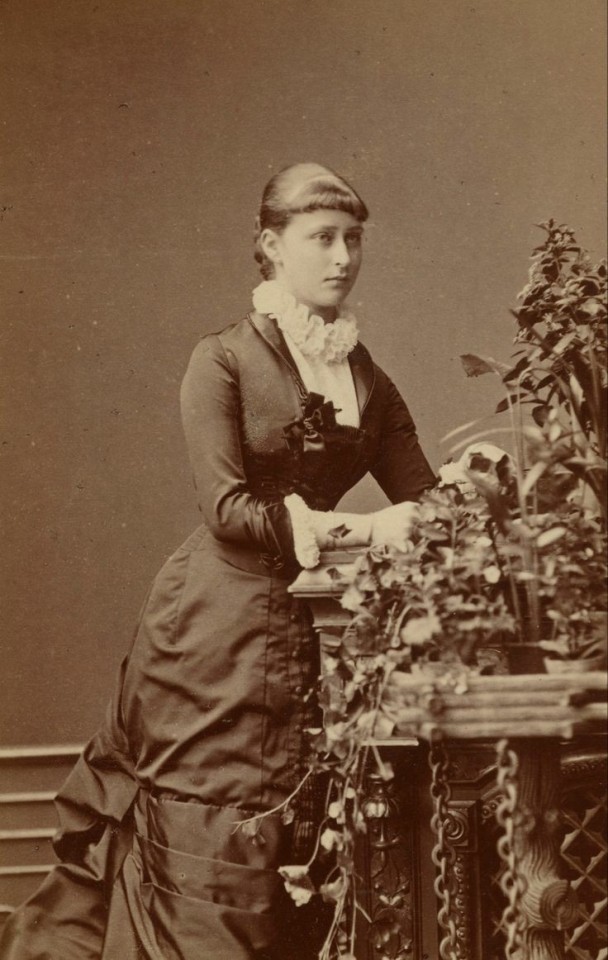

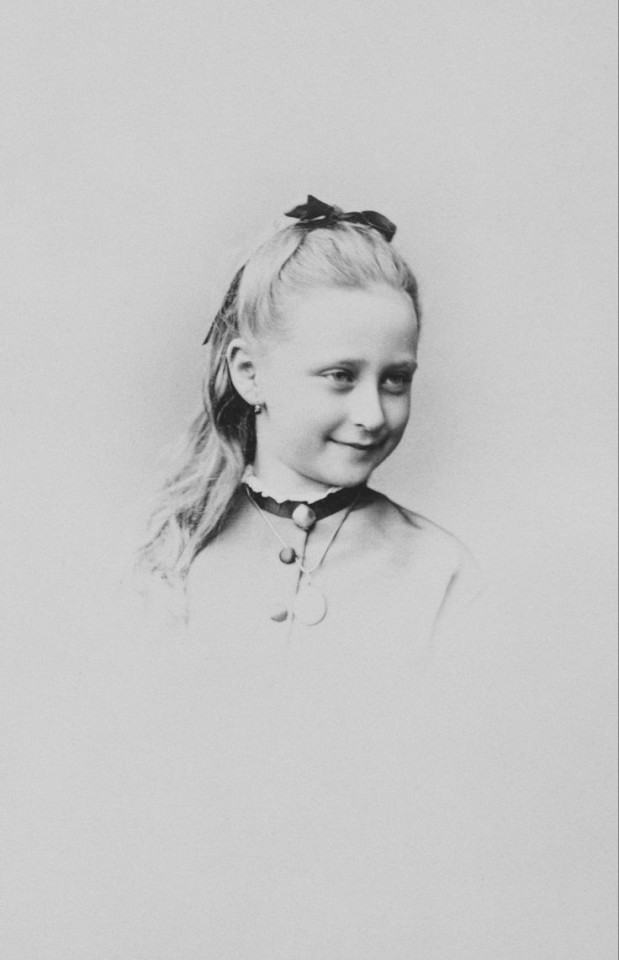



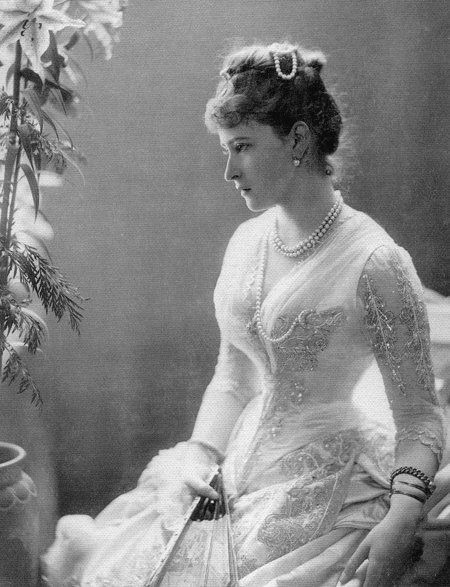


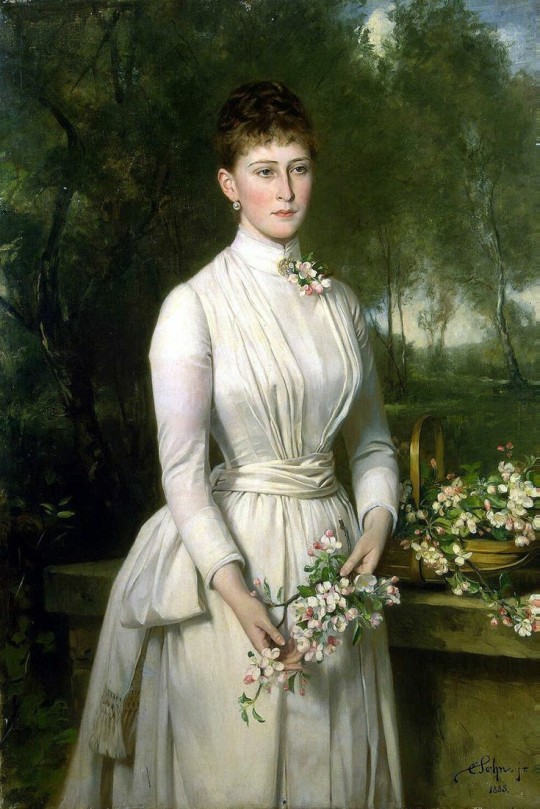
#russian history#romanov dynasty#Grand Duchess Elizabeth Feodorovna#Grand Duke Sergei Mikhailovich#Prince Vladimir Pavlovich Paley#Prince Ioann Konstantinovich#Prince Konstantin Konstantinovich#Prince Igor Konstantinovich#Feodor Remez#Barbara Yakolevna#Saint Mary Magdalene Convent#Alapaevsk
66 notes
·
View notes
Photo

“I really think Empress Maria Alexandrovna and his brother Alexander of Hesse were the children of her mother's lover, Baron August von Senarclens de Grancy. It's just so evident; the 12 year difference between siblings, the correspondence of ministers on the matter (even Queen Victoria was well aware of the rumors), the fact that Grancy married only after the death of Marie's mother, the close relation of the Grancys with Marie and her descendants (Marie's supposed aunt was her governess and there's a correspondence between them) it's very telling. Also, Alexander looks quite a lot like his uncle Adolph von Senarclens de Grancy. I'm just hoping this rumor might be confirmed some day.” - Submitted by stupidgirl2003
17 notes
·
View notes
Text

Prince Alexander of Hesse and by Rhine, mids 1860s.
Patriarch of the Battenberg Family.
#prince alexander of hesse and by rhine#hesse#hesse-darmstadt#battenberg#german royalty#german royal#1860s#mids 1860s
16 notes
·
View notes
Text
The Old Mausoleum and Princess Elisabeth.
In the Grand Ducal Hessian family, the name Elisabeth evokes melancholic feelings; as the lives of the beholders of this beautiful name, which means 'God-given', the princesses Elisabeth, later Grand Duchess Elizaveta Feodorovna (1864-1918) and Elisabeth, Elizaveta Feodorovna's niece (1895-1903), were princesses whose lives and destinies were intermingled with happiness, devotion, service, and sadness. Today, remembering the beholders of this name, we can remember another Hessian princess named Elisabeth who, like Grand Duke Ernst Ludwig's daughter, also died in childhood. Being so young when she passed away, information about her is scarce. She was the fourth child and first daughter of the Hereditary Princely couple of Darmstadt, Ludwig and Wilhelmine, but the fact is that Elisabeth's parents had been leading separated lives for a while and, the age gap with her older brothers, Princes Ludwig and Karl, was of more than a decade. Therefore, that her biological father was not the Hereditary Prince does not come as a surprise, being the most probable biological father August von Senarclens-Grancy, a Swiss noble in service to the court. He was also the possible biological father of her younger siblings, Alexander and Marie, but, like her, they were also recognized by Ludwig. Wilhelmine's pregnancy with Elisabeth is mentioned in a letter from her sister, Russian Empress Elizaveta Alexeievna to her mother, Amalie of Hesse-Darmstadt: '...I am very sorry for my poor aunt in Darmstadt [Luise, Grand Duchess of Hesse and by the Rhine, mother-in-law of Wilhelmine], whose eyes are in such a bad state. Is she happy with Mimi's [Wilhelmine's nickname] pregnancy ? Dear mother, I don't think I have been secretive with you, but when Mimi told me that I was the first person she had spoken to about her pregnancy, I thought it was not for me to be the first to speak of it, but for her in every way. I still don't know how far along she is, she hasn't told me, but I'm sure you do, dear mother...' . Three months after this letter was written, on the 20 of May of 1821, Amalie Elisabeth Luise Caroline Friederike was born. Although not directly mentioned, she was possibly named in honor of her maternal grandmother and maternal aunts and her official paternal grandmother. She, as a child, possibly spent the majority of her time with nannies that took care of her, and with her mother Wilhelmine. Elisabeth has been referred to as her mother's favorite daughter. Her mother, who loved to travel to Switzerland and had visited it several times before, decided to take all her children in a travel there, but what was to be a happy event, was marked by tragedy, as Elisabeth, in the outward journey, contracted scarlet fever and died on May 27, 1826, in Lausanne, a week after her fifth birthday.
Little Elisabeth was laid to rest first in the Darmstadt City Church for some time until 1831, when the mausoleum her mother had asked court architect Georg Moller to erect in the Rosehöhe, a most loved place for her, was finished. This mausoleum with time became an important burial place for the Hessian Grand Ducal family.
As for Wilhelmine, with the death of Elisabeth, her love for Switzerland, traveling, and life in general decayed. She said some years later 'the old wanderlust is no longer to be found in me'.
Wilhelmine died in 1836, and asked her husband, now Grand Duke Ludwig II, to have a simple funeral and to be laid to rest with her beloved Elisabeth.
Sources: L'impératrice Élisabeth, épouse d'Alexandre 1er by Grand Duke Nikolai Mikhailovich, podcast 'Treffpunkt Heilingenberg' #3 'Eine Affäre in der Schweiz', Die Hessin auf dem Zarenthron: Maria, Kaiserin von Russland, http://www.park-rosenhoehe.info/Park_Geschichte.html and https://freunde-des-schlossmuseum-darmstadt.de/wp-content/uploads/2021/09/flyer_palais.pdf
Thanks to @abigaaal for her feedback on this!
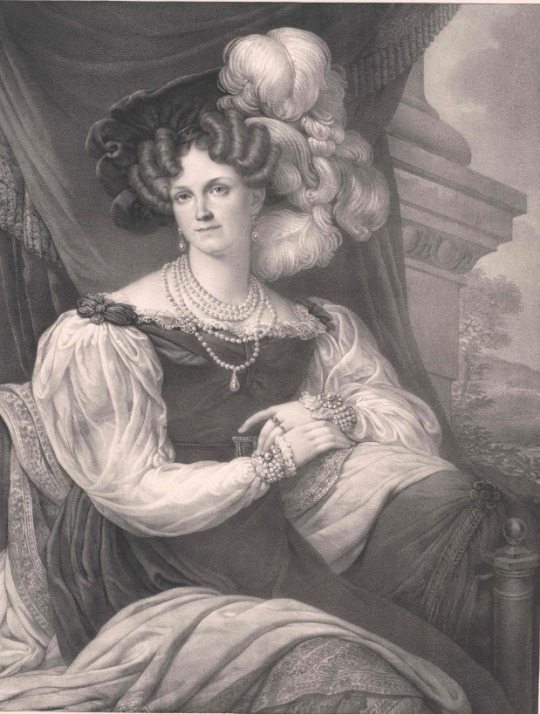
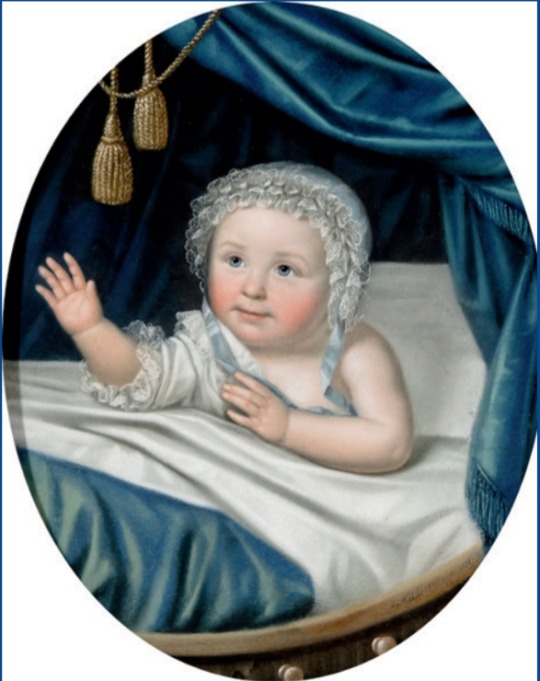
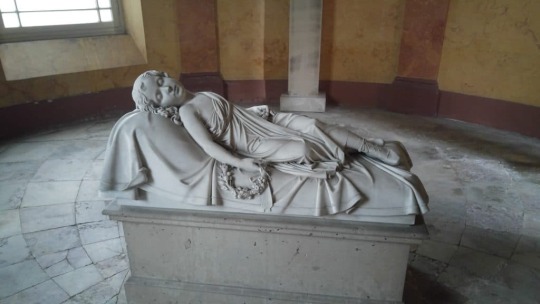
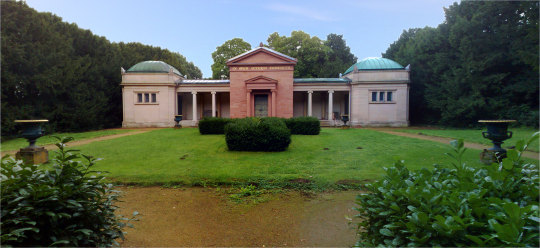
#grand ducal family of hesse-darmstadt#princess elisabeth of hesse-darmstadt (1821-1826)#Grand Duchess Wilhelmine of Hesse-Darmstadt#Princess Wilhelmine of Baden#Prinzessin Elisabeth (1821-1826)#Altes mausoleum#Old Mausoleum#Rosenhöhe#darmstadt#Too much Elizabeths
29 notes
·
View notes
Text
16 November 1937
On this day 86 years ago, 6 members of the Hesse and by Rhine family were killed after their plane crashed in Belgium. The victims were the Grand Duke of Hesse and by Rhine, Georg Donatus, his pregnant wife, the Grand Duchess of Hesse and by Rhine, Cecilie, her fetus, his mother, Dowager Grand Duchess Eleanor, and his two sons, Princes Ludwig and Alexander of Hesse and by Rhine.


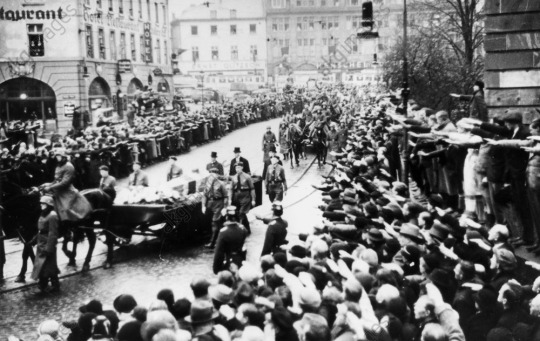
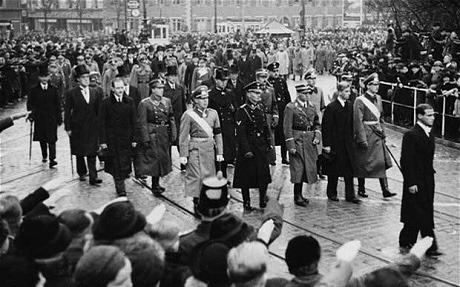
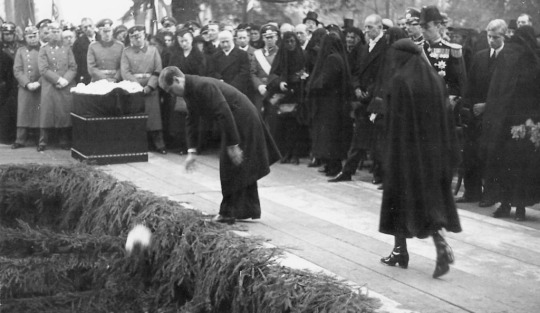
#georg donatus of hesse#eleonore of hesse#cecilie of hesse#Ludwig of hesse#alexander of hesse#hesse and by rhine#hesse family#hessein#house of hesse#hessen#hesseian royal family#darmstadt#grand duke of hesse and by rhine
41 notes
·
View notes
Photo

#Queen Victoria#Princess Marie#Princess Victoria Melita#Prince Arthur#Princess Henry of Battenberg#Princess Alix of Hesse and by Rhine#Princess Alexandra#Princess Beatrice#Princess Irene of Hesse and by Rhine#Prince Alexander of Battenberg#Royal Family#1880's#victorian#tea party
7 notes
·
View notes
Text
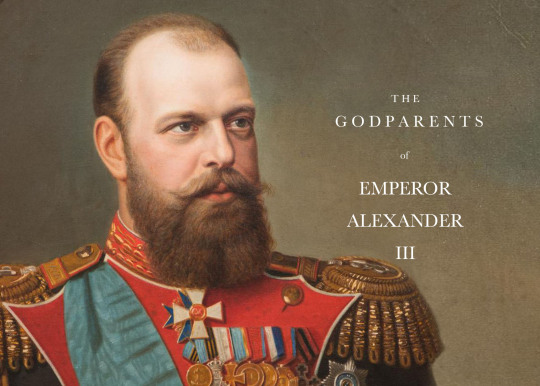

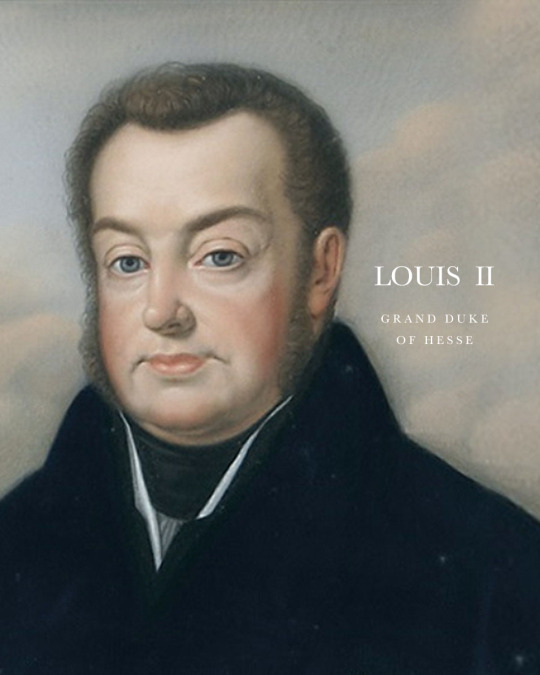

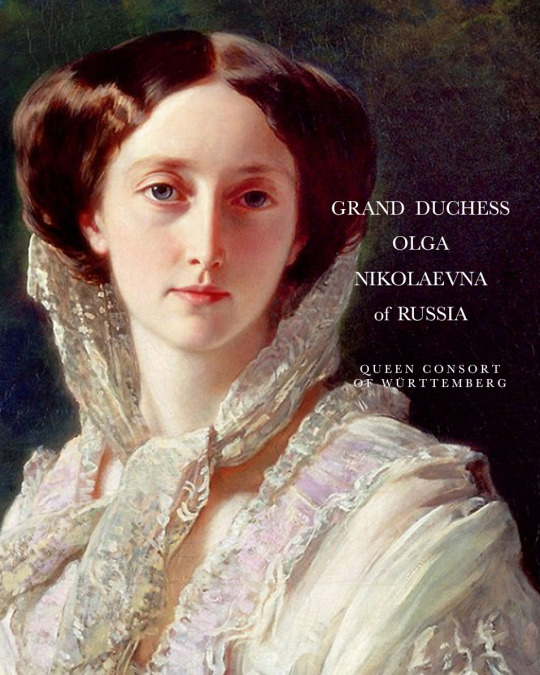
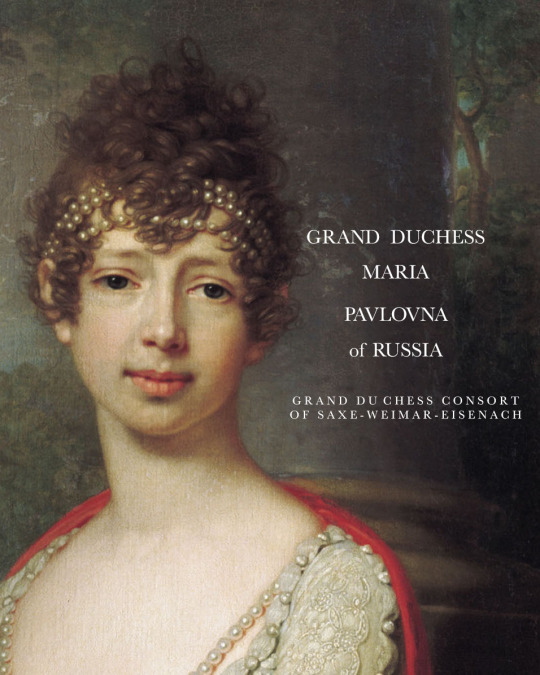

GODPARENTS OF EMPEROR ALEXANDER III
Emperor Alexander III (then Grand Duke) was born as the second son of Emperor Alexander II (then Tsesarevich) on 10 March 1845, during the reign of his grandfather Emperor Nicholas I. He was christened a week later at 10 am in the Winter Palace Church, St. Petersburg, by the Confessor of Their Imperial Highnesses. He had six listed godparents:
NICHOLAS I, EMPEROR OF RUSSIA - his paternal grandfather was one of his godparents present at his christening. Mainly remembered in history as a reactionary whose controversial reign was marked by geographical expansion, centralisation of administrative policies and repression of dissent. He died in 1855, when the Alexander was only 9 years-old, just a week shy from his 10th birthday.
LOUIS II, GRAND DUKE OF HESSE AND BY RHINE - his maternal grandfather was another of his godparents, but was absent at the christening. The hessian grand duke, like his paternal grandfather, was also considered a reactionary leader, he was in conflict with parliament almost his entire reign. The German revolution in 1848-49 proved his inability to govern. On March 5, 1848 he named his son Louis III as co-regent, and a year later he died.
GRAND DUCHESS ELENA PAVLOVNA OF RUSSIA - his great-aunt, the wife of Grand Duke Michael Pavlovich, stood as one of his godparents. Born as Princess Charlotte of Württemberg, she became a close friend of Alexander's mother the Empress Maria Alexandrovna, and was known as an intellectual. She was also considered the most exceptional woman in the imperial family since Catherine the Great.
GRAND DUCHESS OLGA NIKOLAEVNA OF RUSSIA, QUEEN CONSORT OF WÜRTTEMBERG - his aunt was one of his godparents present at the christening. She was the younger sister of his father. Attractive, cultured and intelligent, she was considered to be one of the most eligible princesses in Europe. Just three years after her nephew was born, in 1846, she married Crown Prince Karl of Württemberg. Alexander's older brother the heir apparent Nicholas died just two months before their aunt Queen consort of Württemberg. With his death, he became the next heir apparent, the 'Tsesarevich'.
GRAND DUCHESS MARIA PAVLOVNA OF RUSSIA, GRAND DUCHESS CONSORT OF SAXE-WEIMAR-EISENACH - his great-aunt was another of his godparents. One of the daughters of Emperor Paul I, the grand duchess married a German prince Karl Friedrich, Grand Duke of Saxe-Weimar-Eisenach in 1804. She was an intellect, interested in both arts and sciences. German poet and novelist Johann Wolfgang von Goethe hailed her as one of the worthiest women of his time. She was the great-grandmother of Wilhelm II, German Emperor and Queen Victoria of Sweden.
PRINCESS MATHILDE CAROLINE OF BAVARIA, GRAND DUCHESS OF HESSE AND BY RHINE - his aunt, the wife of his uncle Louis III, Grand Duke of Hesse and by Rhine, was listed as one of the future emperor's godparents. She was the eldest daughter of King Ludwig I of Bavaria. Her marriage to Louis III was childless. She died of cancer in 1862 at the age of 48.
Source
35 notes
·
View notes
Photo

Marie of Battenberg, Princess of Erbach-Schönberg (15 February 1852 - 20 June 1923)
#marie of battenberg#marie caroline#princess of erbach-schönberg#daughter of prince alexander of hesse and by rhine#wife of gustav prince of erbach-schönberg#history#women in history#19th century#20th century#vintage#antique
5 notes
·
View notes
Text
let others wage war: you,happy child, marry-
Masterpost (under repair)
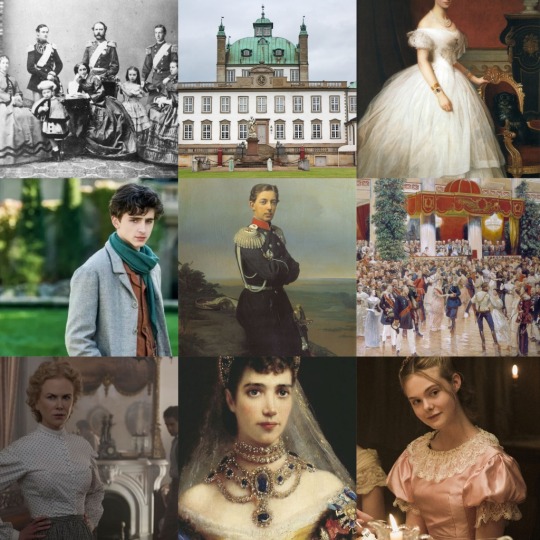
theme(s): politics, war, marriage, dynastic conflicts, alliances, romance, sexual content (eventual), childbirth, gender/society criticisms, class warfare/analysis and more
warning(s): adult content incl unprotected sex, oral (m/f receiving) , masturbation, infidelity, minor character death, miscarriages and more (18+ eventually)
starring:
Y/n (reader) as Princess Dagmar of Denmark (later Tsarina Maria Feodorovna of Russia)
Timothee Chalamet as Tsesarevich Timothee Alexandrovich of Russia (later Tsar Timothee I of Russia)
Saoirse Ronan as Princess Alexandra 'Alix' of Denmark, (later Princess of Wales & Queen Alexandra of England)
danish royal family
Nicole Kidman as Crown Princess Louise (later Queen Louise of Denmark)
Christian Bale as Crown Prince Christian (later King Christian IX of Denmark)
Mike Faist as Crown Prince Frederick of Denmark (later King Frederick XVIII)
George McKay as Prince Wilhelm of Denmark (King George I of Greece)
TBA as Princess Louisa of Sweden (later Queen Lovisa of Denmark)
Millie Bobbie Brown as Princess Thyra of Denmark
Jacob Tremblay as Prince Valdemar of Denmark
Russian royal family (House Romanovs)
Adrien Brody as Tsar Alexander II
Rebecca Ferguson as Tsarina Maria Alexandrovna (nee Princess Jessica of Hesse-Darmstadt)
Louis Partridge as Prince Alexander Alexandrovich of Russia
Kiernan Shipka as Princess Maria Alexandrovna of Russia (later Duchess of Saxe-Coburg
Lucas Jade-Zumann as Prince Vladimir Alexandrovich of Russia
Anya Taylor-Joy as Princess Olga Konstantinova of Russia (later Queen Olga of Greece)
Natalia Dyer as Princess Xenia Konstantinova of Russia
Elle Fanning as Princess Tatiana Maximillianova of Leuchtenberg
Tamzin Merchant as Princess Catherine Dolgoruky
British Royal Family
Angela Bassett as Queen Victoria of England
Zawe Ashton as Crown Princess Victoria of Prussia, Princess Royal of England
Rege Jean-Page as Prince Edward of Wales (later King Edward VII of England)
Jodie Turner Smith as Alice, Grand Duchess of Hesse and by Rhine
Daniel Kaluuya as Alfred, Duke of Saxe-Coburg Gotha
Keke Palmer as Helena, Princess of England and later Princess of Schleswig-Holstein
John Boyega as Prince Arthur, Duke of Connaught and Stratheam
TBA as Prince Leopold, Duke of Albany
Zendaya as Beatrice, Princess Henry of Battenburg
and more....
Based on 19th century European history and royal affairs, and heavily inspired by the documentary on the father in law of Europe : King Christian IX of Denmark, whose children married into or were appointed into various thrones across the continent and wielded significant dynastic influence.
Watch the daughter of an unlikely king in a rags to riches story after gaining the affections of the wealthiest heir in the world. From humble country homes and earthy estates to grand palaces, heirloom jewels and the latest fashion - navigate the tumultuous royal court of the ever-changing, dynamic Imperial Russia at its apex, and the evolving world around it.
Life would never be the same, and your family is at the heart of the world around you as your family achieve royal status.
Chapters:
act one.
act two.
act three.
act four.
act five.
act six.
act seven.
act eight.
act nine.
act ten.
act eleven.
act twelve.
act thirteen.
act fourteen.
act fifteen.
act sixteen.
act seventeen.
act eighteen.
act nineteen.
act twenty.
act twenty one.
act twenty two.
act twenty three.
act twenty four.
...
yes i have requests and other series - but this was meant to be my first work here and one of my passion projects because i am a sucker for royal drama/weddings/gowns and dynastic jewels and heirlooms and all that. tune in!
the quote is based on a saying about the House of Habsburgs in the 16th century.
unknown number of chapters but this will definitely be a multi-part series. schedule for uploads is irregular but they will be long!
#Timothee chalamet imagines#Timothee chalamet x reader#Timothee x reader#Timothee chalamet#Timothee chalamet scenarios
307 notes
·
View notes